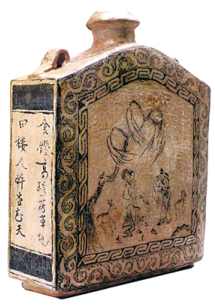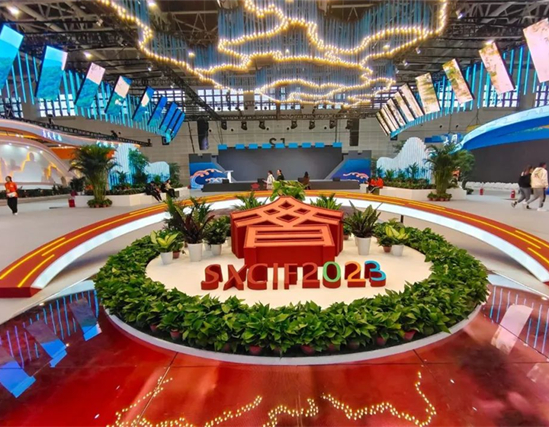Chinese liquor's long journey home to the West
Updated: 2022-05-06

A Fenjiu bottle exhibited at the British Museum. [Photo by Wen Zhaoyan for China Daily]
The Chinese liquor industry developed through its own innovation and with integration of Western techniques.
The white liquor, or baijiu, produced in the North China province of Shanxi, represented by the Fenjiu variety made in the city of Fenyang, is a typical example of Chinese-Western integration.
Historical records show that the distilling technique for alcoholic beverage production was introduced from the West to China at the beginning of the Tang Dynasty (618-907). It led to the creation of baijiu, a higher-purity alcoholic beverage that is easy to preserve.
The township of Xinghuacun in Fenyang is said to be the first locale for the mass production of baijiu, which began in the middle of the Tang Dynasty.
About half a millennium later, the production technique of Fenyang-made baijiu, or Fenjiu, began to influence the liquor industry in the West.
During the process of Genghis Khan's conquest of the West in the 13th century, the Mongolians brought the Fenjiu-production techniques to Russia. The Russians then mastered the unique double-distilling technique of Fenjiu, leading to the birth of the high-purity and high-alcohol-content vodka.
The fusion of Fenjiu and vodka continued in the Ming (1368-1644) and Qing (1644-1911) dynasties, along with the renowned Shanxi merchants' business activities in Russia.
According to historical records, the Shanxi merchants, mostly traders of tea, silk and porcelain, usually drank liquor to warm themselves in the cold climate of Russia. As the traders were not used to the local vodka, some Shanxi businessmen opened small distilleries in Russian cities, making liquor combining Fenjiu technique and local ingredients. The liquor, which was called "Chinese vodka" by Russians, added a new variety to the local markets.
There are also historical records that say the production of brandy in France and whisky in Scotland incorporated the double-distilling technique of Fenjiu in the 18th century.
There are similar associations between Fenjiu and the distilled liquor varieties in the Korean Peninsula and Japan.
Researchers said Fenjiu was first exported to Europe during the Yuan Dynasty (1271-1368), a regime founded by Kublai Khan, the grandson of Genghis Khan.
A bottle with a Fenjiu label, which used to contain exported Fenjiu liquor made in the Yuan Dynasty, is now exhibited in the British Museum in London. The bottle's exquisite decorations include Chinese-style paintings, a couplet and inscriptions indicating its production year, site and producer's name.
Researchers said this bottle is evidence of China's first labeled export of baijiu to Europe.
Wang Pei contributed to this story.



